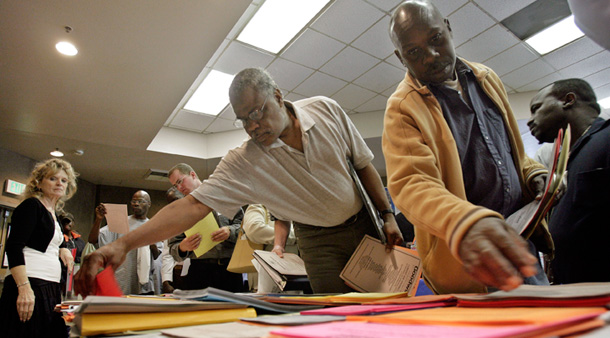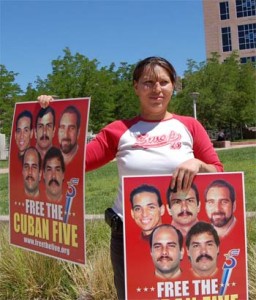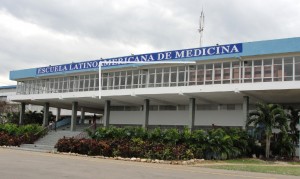
By Arthur Perlo via Political Affairs
The economic crisis has brought suffering to every part of the country and every section of the working class. As in past recessions, this crisis has fallen most heavily on communities already suffering, and particularly on people of color and immigrants. This is true of every aspect of the crisis, including foreclosures and evictions and state and local government layoffs and cuts in services.
There are many attempts to divert attention by pitting sections of the working class against one another: white workers against racially and nationally oppressed, African Americans against immigrants and Latinos, young against old, men against women. Whatever the motives, these themes play into the hands of the Wall Street bankers and other corporate interests who are the primary cause of the crisis and obstacles to solutions that must come at their expense. This article, however, will focus primarily on the jobs crisis in the African American community as a critical part of the overall picture.
Even before the crisis, African Americans faced difficult, and in many ways worsening employment opportunities. This crisis has hit all workers hard, including white workers, with employment levels the lowest since the 1930s. But during the best boom years of 1988-90 and 1998-99, the percentage of African Americans employed in each age group just about reached the levels that white workers have fallen to today. Put another way, white workers today are just beginning to face conditions that African Americans faced in the best of times.
Jobs crisis by the numbers
The analysis presented here indicates that between one quarter and one third of all working-age African Americans are unemployed. Three quarters of Black teens are unemployed.
The “official” unemployment figures for December 2009, compiled by the Bureau of Labor Statistics (BLS), are 16 percent for African Americans, 13 percent for Latinos, nine percent for whites, yielding an average for all workers of 10 percent. [1] The BLS survey attempts to count everyone who is actively looking for work, regardless of whether they are collecting unemployment. The real situation is far worse. The BLS also counts the invisible unemployed – those who want a job but are not actively looking, and who want a full-time job but can only find part-time work. The BLS’ U-6 rate, which includes the invisible unemployed, is a far more realistic estimate of actual unemployment. The U-6 rate for all workers is 17.3 percent. [2] The U-6 rate can be estimated as 28.0 percent for African Americans and 22.3 percent for Latinos. [3]
For African American men of prime working age (25-54) I estimate the “real” jobless rate at 26 percent. For African American teens (16-19), “real” unemployment is 74 percent. Even for white teens it is 52 percent! [4]
Causes of the Jobs Crisis
The numbers are shocking. African American unemployment rates above 25 percent for men aged 25-54, and nearly 75 percent for teens, mean that in many communities there is almost no chance of finding a job.
Looking at long-term trends is instructive. From 1980 to 2000, an average of about 50 percent of white teenagers (men and women) were employed. [5] The number dropped during recessions, then recovered. After the 2001 recession, white teen employment dropped to about 40 percent. In the current crisis, it has fallen to 30 percent.
In the 1980s, only about 25 percent of Black male teens had jobs. The fluctuations were large – in recessions, there were big losses, and employment peaked above 30 percent in the late 1980s and again in the late 1990s. But it dropped to 20 percent in 2001, and in this crisis has fallen below 15 percent. The pattern for Black female teens followed a different pattern in the 1980s, but is similar today.
In the best years, Black teens were no more likely to be employed than white teens are at the worst time in at least 70 years. This tends to be true of other age groups as well. For men aged 25-54, the best year for African American employment about matched the worst for white workers.
There is widespread recognition that unemployment is at crisis levels in African American communities, although use of the “official” 16 percent jobless rate greatly understates the severity. But there is some confusion over causes. It is often said or implied that African Americans, and youth in particular, lack the eduction, social skills, jobs skills and/or attitude for employment. This explanation ignores the impact of the economic crisis, as well as the reality of discrimination.
Before the economic crisis, roughly 79 percent of Black men aged 25-54 held jobs. Two years later, the figure was 69 percent. Did 10 percent of Black men become uneducated or lose their job skills in a two-year period? Did one quarter of working African American teens suddenly develop a “bad attitude?” The more obvious and correct explanation is simply that the jobs are not there.
Causes of lower pay and lack of jobs: Overt Discrimination
Despite propaganda to the effect that discrimination is a thing of the past, or even that African Americans have an advantage due to “reverse discrimination,” objective studies, as well as anecdotal evidence, indicate that deliberate racial discrimination in hiring is still widespread. Studies show that employers are less likely to even interview someone if they think the applicant is Black.6 Another study concluded that young Black men in general are assumed to be criminals and denied jobs by employers.†[7]
At least since Reagan’s election in 1980, the Federal government has moved away from fighting against racial discrimination. Even before George W. Bush became President, EEOC policy was to ignore clear patterns of unintentional discrimination unless there were specific (individual) complaints. [8] Judicial decisions on affirmative action cases have actually leaned to enforcing discrimination, by making it illegal to take any steps against it.
This trend intensified during the recent Bush administration. His Supreme Court appointments both have bad records. Justice Roberts was one of a close-knit group of conservatives who were part of the Reagan administration’s efforts to dismantle civil rights and outlaw affirmative action. [9] In 2004, the staff of the US Commission on Civil Rights issued a blistering attack on the Bush administration’s record. [10] In 2005, 20 percent of the Civil Rights Division’s lawyers were forced out or quit over policies that reduced civil rights prosecutions by 40 percent.
The Obama administration is attempting to re-orient federal agencies toward supporting, rather than opposing, civil rights. But it is an uphill battle. Last year, the Supreme Court with its right-wing majority ruled against the city of New Haven’s attempt to insure that promotions in the fire department would include African Americans.
Causes of lower pay and lack of jobs: Systemic or Institutional Reasons
Regardless of the attitudes of individuals, systemic or institutional reasons are probably at least as important as overt discrimination for the vastly higher number of unemployed African American workers. These factors operate independent of the deliberate decisions of the individuals doing the hiring.
• “About half of all jobs are still found through personal contacts of some sort… economists also suggest that network effects may help to account for income inequality between races.†[11] Articles in the business press frequently cite the advantages of personal networks both for the jobs seeker and the person doing the hiring, a practice widespread in the IT industry amongst others. [12]
• Geography – jobs have moved from where African Americans live (often in central cities) to suburban and rural areas with few African Americans. The IT industry is a prime example.
• As a result of outsourcing in both corporate and government world, on-job training and promotion paths are disappearing. “’For too many of our people, entry level no longer means entry-level. It means dead end’, says Rodney Glenn [of the NYC Transport Workers Union].†[13] African Americans are particularly affected, because they have fewer personal contacts or educational opportunities to provide alternatives.
• Education: Nationally, only two-thirds of all students and one-half of African American, Latinos and Native Americans graduate high school after four years. In New York City less than 10 percent of African American students get a regents diploma (preferred for college admission). [14] Teachers with less than three years experience teach in minority schools at twice the rate they teach in white schools. [15]
• A criminal record is a legal barrier to employment in many professions, and a practical barrier in many more. [16]
• During the 1960s African Americans made gains in the quantity and quality of manufacturing jobs, then concentrated in big industrial centers. Until the early 1990s, African Americans were as likely to have manufacturing jobs as other racial and ethnic groups. [17] The steep absolute decline in manufacturing jobs since the late1990s was accompanied by a geographic shift – as auto plants closed in Detroit and Chicago, new factories, employing far fewer workers, were built in rural counties of the South where few African Americans lived. As a result of these trends, by 2007 African Americans were 15 percent less likely than other workers to have one of the remaining jobs in manufacturing.
• From 1983 to 2006, union representation declined for all groups, but most sharply for Black and Hispanic workers, least so for whites. [18] For white workers, the union members earn 28 percent more than non-union. The union advantage is 29 percent for Black workers, 50 percent for Latinos, and 34 percent for women. [19]
Stimulus and Beyond
In February, 2009, Congress passed the American Recovery and Reinvestment Act (ARRA), more widely known as “the stimulus bill” – not to be confused with the Wall Street bailout (TARP) which was passed under the Bush administration. ARRA has provided some relief from the crisis. It is now reaching its maximum effectiveness, and administration claims that up to 2 million jobs have been created or saved are credible. To what extent has ARRA helped African Americans?
ARRA provided substantial funding to help states pay for and expand Medicaid coverage. African Americans, who are more likely to have low incomes and qualify for Medicaid, probably benefited from this. African Americans also shared in any jobs that were saved or gained in nursing homes and other health care providers. And African Americans, who suffered the greatest job losses, may well have been the greatest beneficiaries of the ARRA’s increase and extension of unemployment benefits and COBRA.
ARRA aid to local governments, including school districts, was distributed in part on the basis of need. Cities with large African American populations generally have high poverty, and qualified for significant assistance. This helped reduce layoffs in school systems and some other government departments, preserving jobs and education quality in schools where a large proportion of students and a significant number of teachers are African American.
On the other hand, according to a report by United for a Fair Economy, “Most of the job-creation projects in the American Recovery and Reinvestment Act (ARRA) and other federal initiatives are investments in infrastructure and transportation, “green†building retrofits, and pass-through funds that help states maintain schools and other important programs. All are worthy, but there is no evidence that the jobs these initiatives create are going to the communities most in need. In some cases, the opposite is true.” [20]
What’s Ahead?
The most optimistic forecasts call for a slow economic recovery, with unemployment declining slowly, but remaining high for many years. It is also possible – even likely – that there are new economic shocks ahead, which can cause even more job losses. The Administration and Congress are proposing measures that will, preserve some of the benefits of the existing stimulus. These are urgently needed. For example, beginning later in February millions of unemployed workers will lose their unemployment insurance and health coverage if those measures are not extended. State and local governments will budget for even bigger layoffs and service cuts later this year if help is not forthcoming. Even if passed over intransigent Republican resistance, these measures will not substantially dent the unemployment crisis.
The most effective solution would be to extend the existing stimulus programs on a much larger scale and, in addition, provide funding for direct government employment of millions of people, with special provisions for youth. This could replicate, in modern conditions, the WPA and CCC programs of the 1930s, when millions of people were employed in public works construction that we still use today, as well as community based music, art and theater.
More than 60 organizations have come together in the Jobs for America Now Coalition. The AFL-CIO, Change to Win, NAACP, National Council of La Raza, and Leadership Conference on Civil Rights are amongst the leading forces. The Coalition has adopted a 5-point plan, which includes strengthening the safety net, relief for state and local governments, investment in infrastructure, direct employment through public service jobs, and job creation tax credits. It is significant that the plan includes provisions to direct maximum resources to communities and individuals who have been hardest-hit by the economic crisis. The total cost of the plan would be about $400 billion the first year, and would generate between 4.6 million and 6 million jobs.
The Jobs for America Now program is the minimum necessary to seriously address the jobs crisis in general, and particularly in the African American community. But it is also important to fight for measures in the design and implementation that direct greatest resources where the need is greatest. This is not automatic.
In its report State of the Dream 2010, the group United for a Fair Economy provides guidelines for stimulus programs. They include [21]:
• Target job creation in high-unemployment communities. One example, HR 4268, the “Put America To Work Act of 2009,†would fund one million public jobs for workers who have been jobless for at least 26 weeks and low-income workers who have been jobless at least 30 days and need immediate assistance.
• To ensure that stimulus funds reach working class and disenfranchised communities, equity assessments should be required for all federal spending. Demographic data on race, ethnicity, gender, class, and geography will be required for an equity assessment.
• Recommit to affirmative action policies. Affirmative action has a successful history of making inroads for women, people of color, disabled and lower income Americans. This successful tool must be used to narrow the jobs and income gap that separates our “two Americas.â€
It is significant that the major labor unions have joined with civil rights organizations and others in the Jobs for America Now Coalition in emphasizing the need to target programs in the hardest-hit areas. It will take a tremendous fight to win.
We should take heart from and learn the lessons of history. In the 1960s, the Civil Rights movement, with the support of most of organized labor and most working people, won significant gains for African Americans. This period also saw economic and political gains for the entire working class, as the political power of the racist, anti-labor Southern ruling class was challenged. Significant numbers of African Americans began to be elected to Congress, laying the basis for the today’s Quad Caucus a large bloc of consistently pro-union, pro-worker votes – the Congressional Black Caucus, Hispanic Caucus, Asian American Caucus, and Progressive Caucus.
The huge movement that elected President Obama is a recent example. During the election campaign, union leaders directly challenged the racism that made some white workers reluctant to vote for a Black candidate. As a result of these efforts, a majority of white union members joined with African Americans, Latinos, youth to achieve a remarkable victory.
The same level of unity, organization and mobilization, as well as the willingness to challenge the racist practices and structures that result in massive job discrimination, are necessary today. The goal must be not only to restore employment to the level before the economic crisis, but for African Americans and all Americans to have the opportunity to be employed at useful, productive jobs with union wages, in full and equal proportion.
Notes
[1] Bureau of Labor Statistics, Employment Situation for December, 2009. Figures are rounded.
[2] ibid, Table A-12.
[3] The BLS does not provide the U-6 rate for separate demographic groups. My estimate assumes all groups have the same proportion of invisible unemployed.
[4] Author’s estimates based on BLS statistics. The method involves estimating how many would be working if jobs were freely available.
[5] BLS, from Current Population Survey Employment-Population ratio at http://www.bls.gov.
[6] The Ethicist, New York Times Magazine, 5/30/2005. An African American male reports getting more calls when he files resumes under middle name (Raymond) than first name (Malik). This anecdote confirms various studies. See, for example, http://www.chicagobooth.edu/capideas/spring03/racialbias.html reporting on a 2003 MIT study. See also http://www.thewashingtonreport.org/?p=65 (August, 2009) which cites a long-time corporate recruiter to the same effect.
[7] Charles Stein, Economic Life, Boston Globe, 7/31/05.
[8] Sally Lehrman, Why Race-Based Data Matters, Institute for Justice and Journalism, Alternet, 10/6/2003, Page 5.
[9] R. Jeffrey Smith et al, Roberts Sought to shift course of civil rights law, Washington Post 7/31/2005 by way of MSNBC.com.
[10] U.S. Commission on Civil Rights, Redefining Rights in America – the civil rights record of the George W Bush Administration, 2001-2004, Draft report for the Commissioner’s review, September 2004.
[11] Daniel Gross, Economic View – It’s Who You Know. Really. NYT August 22, 2004.
[12] For example, see Art Perlo, The Digital Divide and Institutional Racism, Political Affairs, 2001.
[13] Joel Millman, Promotion Track fades for those starting at Bottom, Wall Street Journal, 6/6/2005.
[14] Bob Herbert, New York Times, 7/21/2005.
[15] Urban League, State of Black America 2005.
[16] According to a New York Times editorial (6/6/2005), the TSA interpreted Patriot Act to make it almost impossible for ex-felons to become long-haul truckers. “Law-abiding ex-offenders will be barred from one of the few professions that have historically been open to them.†(my emphasis). Ex-prisoners are proscribed from many service jobs as well as many construction jobs. A criminal record is associated with a 50 percent reduction in employment opportunities for whites, and a 64 percent reduction for Blacks, for entry level jobs requiring HS education. (Devah Pager, The Mark of a criminal record, University of Wisconsin Madison, June 2002.)
[17] http://www.cepr.net/documents/publications/unions_aa_2008_02.pdf. The Decline in African-American Representation in Unions and Manufacturing, 1979-2007 by John Schmitt and Ben Zipperer, Center for Economic and Policy Research.
[18] www.cepr.net Decline in African-American Representation in Unions and Manufacturing, 1979-2006 March, 2007.
[19] Figures for 2009. Bureau of Labor Statistics, Current Population Survey, table 2. http://stats.bls.gov/news.release/union2.toc.htm.
[20] United for a Fair Economy, State of the Dream 2010: Jobless and foreclosed in communities of color.
[21] Excerpted from State of the Dream 2010, op. cit.
 Argentinean personalities have sent a letter to Hillary Clinton and Janet Napolitano demanding visas for two Cuban women so they can visit their husbands imprisoned in the United States for more than 11 years.
Argentinean personalities have sent a letter to Hillary Clinton and Janet Napolitano demanding visas for two Cuban women so they can visit their husbands imprisoned in the United States for more than 11 years.















